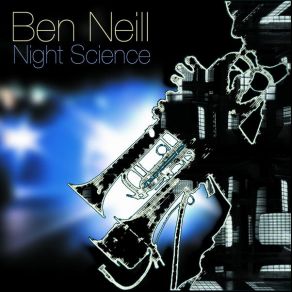Night Science
Download links and information about Night Science by Ben Neill. This album was released in 2009 and it belongs to Ambient, Electronica, House, Jazz, Rock, Dancefloor, World Music, Dance Pop genres. It contains 10 tracks with total duration of 49:29 minutes.

|
|
|---|---|
| Artist: | Ben Neill |
| Release date: | 2009 |
| Genre: | Ambient, Electronica, House, Jazz, Rock, Dancefloor, World Music, Dance Pop |
| Tracks: | 10 |
| Duration: | 49:29 |
| Buy it NOW at: | |
| Buy on iTunes $9.90 | |
| Buy on Amazon $8.99 | |
Tracks
[Edit]| No. | Title | Length |
|---|---|---|
| 1. | Futura | 5:32 |
| 2. | Afterimage | 5:03 |
| 3. | Gaugear | 4:43 |
| 4. | Outlands | 5:06 |
| 5. | Menace Ultimo | 4:02 |
| 6. | Hearthrob | 5:07 |
| 7. | Monochromatic | 5:20 |
| 8. | Alpha Dub | 4:57 |
| 9. | Booster | 4:55 |
| 10. | Hudsonic | 4:44 |
Details
[Edit]Though trumpeter/composer/producer Ben Neill has been deeply influenced by both the electronic "Fourth World" music of Jon Hassell (who also re-emerged in 2009) and Miles Davis' dark voodoo groove science of the 1970s, the student has taken his findings further than his aesthetic mentors. The difference is in how completely Neill has steeped himself in electronic music — period. His "mutantrumptet" is named so because it is actually a hybrid between a trumpet, a sampler, and a drum machine; it contains multiple bells. Since he began releasing records in 1991, he has paid careful attention to emerging technologies, rhythms, and the direction of electronic and dance music worldwide. Night Science is his first album in seven years. Much has changed in the electronic music scene, and the sonic narrative here reflects that he's right on top of it. This set employs his current fascination with dubstep and grime, two forms that emerged from the U.K. during the middle part of this decade and continue their innovative developments with artists such as Burial, Benga, Skream, Milanese, and Russian artist Blasta, to name a few. Dubstep comes out of the U.K.'s garage scene in the early aughts. It relies on a 2-step rhythm, using both snare sounds and a heavy reliance on digital basslines that are mutant cousins to analog dub-style reggae. Usually recorded at 140 bpm or thereabouts, it distinguishes itself from drum'n'bass and even 2-step garage with deeply — sometimes wildly — syncopated beats and even half-time rhythms. The snare plays a key role in dubstep: it is — usually — allowed one beat per bar, usually on the three, with more reliance placed on the bassline to create the forward pace of the rhythm.
Neill also get something else about dubstep: its darker-edged, even sinister sounds — and he employs that to his advantage here in spades. Check out "Menace Ultimo," with the forceful bassline, layers of ambient sound, and an overload of wow and flutter before the drums even enter. The melodic component on the darkly heavy, utterly rhythmic tracks and textured atmospheres is a background distorted trumpet sound, flitting through the mix at its fringes; keyboards establish broken melodies or fragments thereof, and the half-time snare rhythms break and pop just under that bassline. "After Image" begins with a shard-like melody from a piano and the trumpet, but it gets shoved to the margin with other blips and beats that insistently take center stage. Since the melody doesn't completely disappear, it becomes a tense, taut soundscape that is suggestive rather than a statement. "Alpha Dub" contains more traditional elements of dub, but as much as those EFX harbor the tune's bottom, they drop out entirely in places and are replaced with passages of layered keyboard sounds, a muted trumpet bell, and open, distorted basslines crisscrossing with the snares and "trad" bass sounds in a soundclash. While the sonics of all these tracks have very thick threads holding them together that create a futurist dread narrative, improvisation does have its place as well. What's most remarkable, of course, is that all of this noise comes from a single instrument. Neill had his mutantrumptet redesigned back in 2004, but this is the first time he's recorded with it. The album is certainly as nocturnal as its title, but this isn't background music. It's forward-sounding and wildly beat-conscious; it's a creation that looks at rhythm, jazz, African funk, grime, and dubstep with fresh ears and a bold compositional sensibility that extends both soundworld science and electronic music to a horizon that extends as far as the ear — and the imagination — can hear.